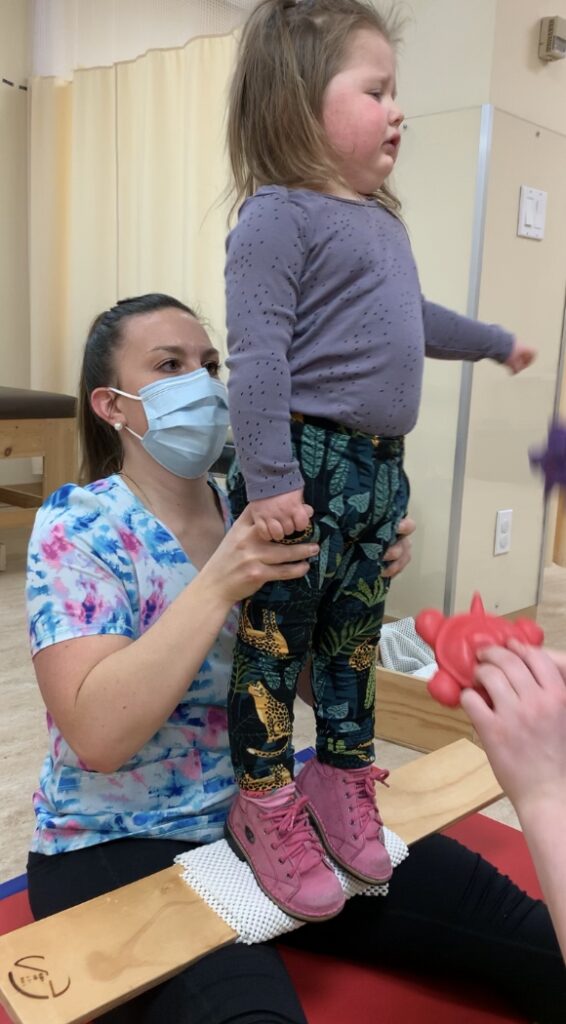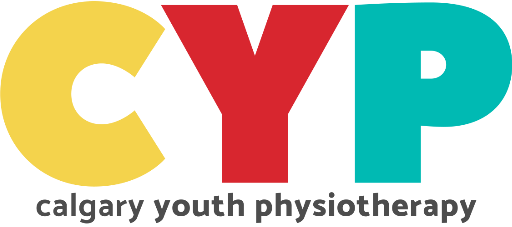CME – What is it?
CME stands for Cuevas Medek Exercise and was developed in Chile by Ramon Cuevas.
CME is a hands-on psychomotor therapy technique used with children to provoke new motor movements with an ultimate goal of functional movement and the highest level of independence. It focuses on the connection between the brain and body, and the brain’s natural recovery potential. CME exercises are based on the principle of antigravity reactions with therapists providing support as distally (or as low) as possible. As the child works to remain stable, they can uncover missing or new motor skills using unconscious muscle control. You may also see your therapist use a variety of simple boxes or other tools designed specifically for CME exercises to provide new motor challenges for your child.
Key Characteristics of CME:
- CME provokes the appearance of the absent, or NEW, motor functions
- CME provokes automatic responses of motor control
- CME exposes the body segments to the influence of gravity
- CME promotes the use of distal support
- A trial period is proposed to determine if CME will be an effective treatment option for your child
The CME difference!
“Traditional” therapy approaches have a heavy focus on facilitating a certain response. However, CME is designed to provoke a response. That is, instead of using external supports to reduce the effort of a child when performing a motor skill, the exercises used in CME focus on decreasing support and placing the child in positions that will provoke automatic motor responses.
Who can benefit from CME?
Any child who is not meeting their motor milestones can benefit from CME exercises. However children with conditions such as cerebral palsy, global developmental delay, various genetic disorders (such as Down Syndrome, Rett Syndrome, Angelman Syndrome, etc), spina bifida, seizure disorders (for children under medical supervision), or those who are at risk of motor delay related to premature birth and/or hypoxic brain injury are some of the most commonly treated children using CME exercises.
Therapy Intensives
What is a therapy intensive?
A therapy intensive is an approach to therapy where a child is seen at an increased frequency and intensity over a predetermined amount of time (generally 1-2x/day for 1-2 weeks at a time – the specific frequency for each child may vary and will be determined in collaboration with your therapist/s). Therapy intensives may involve one or multiple disciplines including physical therapy and occupational therapy.
Why do a therapy intensive?
Research has shown that children with neurological impairments or other conditions impacting their motor development can benefit from therapy at a greater frequency than traditional monthly or even weekly therapy. Daily therapy can help children’s brains make new motor connections in a shorter period of time. CME specifically offers exercises that expose a child to gravity to provoke anti-gravity movements and are repetitive and proven to provoke new motor movements, particularly when used with an intensive model.
FAQs:
Is CME only offered as an intensive therapy?
No! While CME is shown to be effective in intensive blocks, your CME trained physiotherapist may also use it within their weekly sessions with your child.
My child has unusual muscle tone in their legs. Can they still benefit from CME?
Yes! High or low tone is not necessarily a limiting factor when using CME exercises.
My child doesn’t like their therapy routine and it is almost impossible to get consistent results. Will CME be any different?
CME principles provoke automatic responses to gravity, so your child does not need to actively engage in the exercises. Children also tend to become more relaxed and enjoy their sessions more as they become more comfortable and build trust with their therapy team.
Is CME just for children with complex needs?
No. CME can be used and is effective for a range of gross motor delays (from mild to severe). However, children with diagnoses of degenerative conditions may not be a good fit for CME.
DMI therapy seems similar to CME?
DMI shares similar principles of CME. CME avoids the use of support beyond supportive footwear, while DMI is more accommodating of tools like theratogs and AFOs.
Does someone need certification in CME to practice?
Certification is post graduate and occurs through structured course by accredited instructors. Mandatory practice and mentorship hours are also required before being able to certify in CME and use it professionally.
Still looking for more information about CME? Reach out to us at CYP to speak to one of our CME certified therapists, or head to the creators site or visit https://www.simonademarchi.com/ (to learn more from one of the world’s lead instructors and advocates of CME)!

